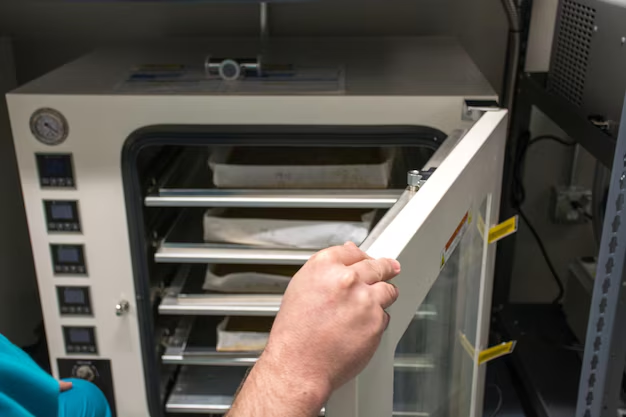How to Successfully Test Your Refrigerator's Start Relay 🔧
Is your refrigerator not keeping your food cold as effectively as it should? If this sounds familiar, your refrigerator’s start relay might be the culprit. The start relay is a small component, but it plays a crucial role in your refrigerator's operation. Understanding how to test this key element can save you a lot of time and potentially costly repairs. Join us as we delve into the world of start relays, revealing what they do, how to test them, and why this knowledge can empower you as a refrigerator owner.
Understanding the Role of the Start Relay
What Is a Start Relay?
The start relay is a small but mighty component that assists your refrigerator's compressor in starting up. It briefly sends an extra burst of power to the compressor motor at start-up. This is essential to overcoming the initial inertia that could otherwise prevent the compressor from starting.
Why Is the Start Relay Important?
- Startup Power Boost: It delivers the necessary power to get the compressor moving.
- Energy Efficiency: Helps in maintaining lower energy consumption by ensuring the compressor operates optimally.
- Overload Protection: Works with the overload protector to save the compressor from electrical overload.
If the start relay malfunctions, the compressor might fail to start, causing the refrigerator to not cool properly. This makes understanding and testing the start relay a key aspect of refrigerator maintenance.
Signs Your Start Relay Might Be Failing
Before diving into testing, you need to recognize the signs of a failing start relay:
- Warm Fridge: The refrigerator is not as cold as it should be.
- Clicking Noise: A clicking sound coming from the back of the refrigerator.
- Short Cycling: The compressor briefly starts then stops repeatedly.
- Physical Damage: Visual signs of damage or burn marks on the relay.
Understanding these signs can lead you to test the start relay without waiting for a complete compressor failure.
How to Test Your Refrigerator’s Start Relay ✍️
Safety First: Precautions to Take
When working with electrical components:
- Unplug the Refrigerator: Always disconnect from the power source.
- Use Insulated Tools: Ensure your tools are insulated to avoid electric shock.
- Dry Environment: Ensure the floor and your hands are dry.
Tools Needed
- Multimeter (Ohmmeter)
- Screwdriver
- Pliers
Step-by-Step Guide to Testing
Step 1: Locate the Start Relay
- Unplug the Refrigerator to ensure safety.
- Remove the Back Panel: Typically located at the bottom rear of the refrigerator—use a screwdriver.
- Find the Compressor: The start relay is usually attached to the side of the compressor.
Step 2: Remove and Inspect the Start Relay
- Disconnect Wires: Note where each wire connects, then detach them.
- Pull Out the Relay: Gently remove the start relay from the compressor.
- Visual Inspection: Check for signs of damage or burn marks.
Step 3: Test the Start Relay with a Multimeter
- Set Multimeter: Switch your multimeter to the ohmmeter function.
- Measure Resistance:
- Connect the multimeter probes to the relay's terminals.
- A good relay will usually show resistance between 3 to 34 ohms (consult your refrigerator’s manual for exact specifications).
- If the reading is outside the range, the relay may need replacing.
- Check for Continuity: The multimeter should beep if it reads continuity, indicating the relay is working correctly.
Interpreting Results
- Normal Resistance: If readings are within range, the relay is likely functional.
- No Resistance: Indicates a broken circuit—relay needing replacement.
- No Continuity: Suggests internal failure within the relay.
What to Do if the Start Relay Is Faulty
Replace the Start Relay
If your testing confirms that the start relay is faulty, the next step is to replace it. Buying a new, compatible relay and switching it out will often solve the cooling issues with your refrigerator.
Professional Help
For those unsure about testing or replacing the relay, seeking professional assistance is a reliable option.
Pro Tips for Maintenance 🌟
- Regular Checks: Include the start relay in routine refrigerator maintenance.
- Keep It Clean: Dust and debris can cause overheating, leading to relay failure.
- Timely Replacements: Don't wait for complete failure—replace components showing early warning signs.
Quick Summary of Testing a Refrigerator Start Relay
| Step | Action Required |
|---|---|
| Unplug | Disconnect from power to ensure safety. |
| Locate & Inspect | Find the relay attached to the compressor, inspect for damage. |
| Use Multimeter | Check resistance and continuity; abnormal readings suggest faults. |
| Replace if Needed | Purchase a new relay if your test indicates failure. |
| Professional Help | Consult a technician if unsure about any step or if problems persist after replacement. |
By following these detailed instructions and insights, you’ll be well-equipped to test, diagnose, and tackle issues with your refrigerator’s start relay effectively. Keeping your start relay in check can ensure efficient refrigerator performance and prolong its lifespan, ultimately giving you peace of mind knowing that your appliance is in top form. 😊
